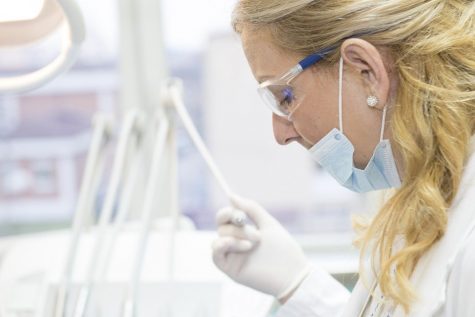Semester Update on Microbiology and A&P II
Hello, my dear readers! We are now almost four weeks into the semester, and Georgia is facing yet another sudden cold front. Schedules are becoming more busy as the classwork adds up, but it also feels as though the semester is flying right past us. It is my sincerest hope that your semester has been smooth and without too many troubles so far and that you’re finding something to enjoy. And if you’re here for an update on Anatomy and Physiology II and Microbiology, then you’ve come to the right post!
Since this is my final semester of prerequisites before nursing school, I am only taking the two aforementioned classes. However, I can go ahead and confirm for you that these two courses alone are indeed comparable to a full semester of classes, particularly A&P. Each day after lecture for either, I convert my notes into questions that I can use to study and then study them at least twice within that week. So far, I have found this to be more effective than simply highlighting and reading my notes. This is because creating questions from the lecture material actively engages your brain. In contrast, reading through and highlighting your notes is a passive strategy that quite frankly doesn’t build as strong of neural connections. Yes, it’s easier and takes less time, but the payoff isn’t worth it. So, studying on its own takes up the majority of my time. But then there’s the labs.
For Microbiology, we must complete a prelab before every lab. These actually aren’t difficult or long winded. Instead, they consist of a reading passage, usually a paragraph or two, concerning a Microbiology subject related to the lab, such as nosocomial infections (for our lab on handwashing), along with two or three questions that require some further research–but again, nothing hard or tedious. In fact, I find them exciting and delightfully informative. So, in general, Microbiology lab is nothing to fear. Just make sure that you really devote time and attention to learning sterile techniques, especially in preparation for identifying your “unknowns” (unlabeled bacteria) at the end.
On the other hand, A&P II lab is everything that you would expect. Did you think A&P I lab was saturated with information? Well, don’t anticipate a break with A&P II. In fact, especially if you take it with Dr. Zuiderveen, it feels more overwhelming than the lab for A&P I. Regardless of how interesting the material may be, I will be brutally honest with you by saying that you will feel at least mildly distressed after every lab. However, I will also be a bit more positive in saying that you will find a way to manage it as long as you spread the studying across your weekend and the days after. In fact, I normally have a good grasp of the material after studying over the weekend and will then simply check myself on everything once a week following that lab until the exam. Also, A&P II will require a substantial amount of time outside of lab for studying and dissection (and yes, dissection counts as a part of your grade). For example, I spend at least three to four hours in the lab every weekend plus any additional time needed for dissection. And yeah, the dissection process is painfully slow and and an almost never ending source of frustration. But it can also be fun and rewarding–just wait until you start cutting away some fascia and separating muscles. Adding on to that, asking your professor to check the pig dissection, especially with the muscles, is like presenting your paper to an editor. It’s nerve wracking, uncomfortable, and feels like your work’s never satisfactory. But it’s also a good motivator to continue improving your dissection skills and for expanding your knowledge. And here’s a significant final tip: Remember to state your rights and lefts if the structure you’re studying comes in pairs–and sometimes, this is something you have to discover on your own or fact check with Google.
Altogether, this update may seem like a bleak one, but don’t let it mislead you! While Microbiology and A&P II demand a lot of time commitment, they are both full of engaging concepts that are highly relevant to the healthcare field as a whole. I’ll try to post more updates on these courses, but hopefully, this one proved informative to you! Enjoy the coming days and the colder weather while it lasts.
Nursing students unite!





